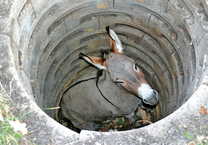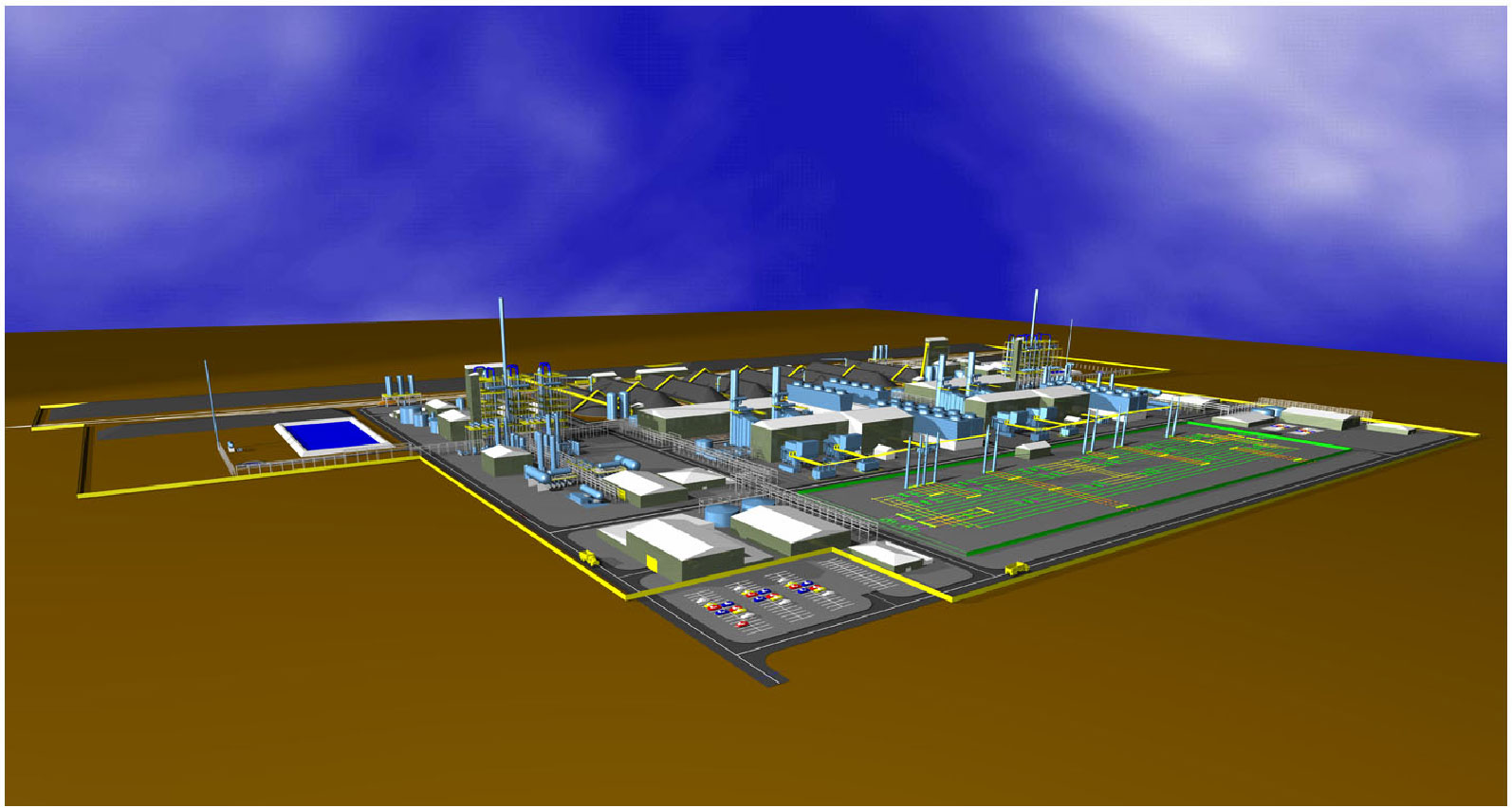Phase II Report on Excelsior’s Mesaba Project
September 14th, 2007
IT’S NOT IN THE PUBLIC INTEREST! WELL, DUH!
Yet another silver stake in the ugly, slimy heart of Excelsior Energy’s Mesaba Project — the coal gasification (IGCC) boondoggle that’s been haunting Minnesota for almost six years now. Today, the ALJ Recommendation has been released, and it also finds that that there’s no basis for moving forward.
Here’s the bottom line, sans formatting glitches:
CONCLUSIONS OF LAW
The Minnesota Public Utilities Commission and the Administrative Law
Judges have jurisdiction over this matter pursuant to Minn. Stat. §§ 216B.08,
216B.1693, 216B.1694, and 14.50, Minn. R. 1400.5100-.8400, and to the extent not
superseded by those rules, Minn. R. 7829.0100-.3200.The Commission gave proper notice of the hearing in this matter, has fulfilled all
relevant substantive and procedural requirements of law or rule, and has the authority to
take the action proposed.Since the Project is an Innovative Energy Project under Minn. Stat. § 216B.1694, subd.
2(a)(4) and is therefore also as a Clean Energy Technology under Minn. Stat. §
216B.1693.The Project and its technology do not satisfy the requirements of Minn. Stat. §
216B.1693(a) because the Project is not likely to be, a least cost resource, including the
costs of ancillary services and other necessary generation and transmission upgrades,
to provide 13% of the electric energy that Xcel supplies to its retail customers.It would be contrary to the public interest for the Project to supply 13% percent of Xcel
Energy’s retail load starting in 2012.
This report has some choice nuggets, beyond listing “Wind on the Wires” as an Intervenor, such as this slap down of Excelsior when they tried again, for the eighthundredthousandth time, to enter evidence long after the record closed (I’ve made how many Motions trying to stop this? Amazing that the ALJ is not letting this slide by):
In summary, the ALJ concludes that the written testimony of Messrs. Cortez and
Weissman contained in Excelsior’s Offer of Proof is not admissible either to revisit
Phase 1 issues that have been referred to the Commission issues or to supplement
their prefiled testimony on the Phase 2 record. If the Commission should conclude that
the written testimony of Messrs. Weissman and Cortez is not repetitive but necessary
for resolving either Phase 1 or Phase 2 issues, it may wish to remand proceedings to
the ALJ for inclusion of that evidence in the record and to provide opposing parties with
an opportunity to present rebuttal evidence.
In this docket, as in the others, Excelsior submitted statements to show legislative intent, ones that I challenged with Motions to have them tossed out, and the ALJ summarily said, “NO THANKS” to Excelsior, not only giving them a lesson in statutory intent, but also a slap upside the head to their megalomaniacal entitlement notions:
First, the communications by the Governor and members of the Legislature that
Excelsior relies on are either irrelevant, inadmissible to establish legislative intent, or
both. In his May 23, 2003 letter, the Governor communicated to members of the Senate
a number of objections he had to H.F. 9, which the House had passed the day before
and had sent to the Senate for its consideration. The third paragraph of the
Governor’s letter stated:
The coal-gasification plant technology proposed for the Excelsior Energy
project will provide base-load power with clean emissions, helping pave the
way for a better future. The project also provides economic development
opportunities in a region of the state that has suffered significant job losses.
The project has merit and it should be encouraged, but not at the expense of
true renewable initiatives.”
The Governor’s letter sheds no light on his position on whether there should be an
expiration date for the proposed Minn. Stat. § 216.1693 and, if so, what that expiration
date should be. Moreover, even if the Governor’s letter is taken as an expression of his
desire for a long term power supply entitlement in Minn. Stat. § 216.1693 extending into
the indefinite future, the Legislature passed a bill on the following day that included the
explicit expiration date in Minn. Stat. § 216.1693(d), and the Governor subsequently
signed that amended version of the bill into law. Excelsior also relies on some more
recent statements by legislators, including some bill authors, as to what the Legislature
may have intended when it passed H.F. 9. However, comments and statements of
legislators, including authors, made after a statute has been passed “are inadmissible
for the purpose of construing a statute.”
…
Finally, Excelsior argues that any interpretation of Minn. Stat. § 216B.1693(d)
other than its own would defeat the purpose of the statute, undermine the legislative
intent behind the law and eliminate the intended effect of the statute, “which is to
encourage the development of IGCC plants to serve Minnesota’s need for base load
power.” In other words, Excelsior argues that there is no reasonable explanation for
having the statute and the entitlement and obligation that it creates expire on January 1,
2012. The ALJ also disagrees with that analysis. In its Phase 2 argument, Excelsior
proposes that Minn. Stat. § 216B.1693 evidences a legislative “intent to enable clean
energy technology to establish to establish a foothold in Xcel’s generation
portfolio . . . .” In the ALJ’s view that proposition is only partly correct. First of all, by
enacting Minn. Stat. § 216B.1693, the Legislature did not guarantee clean energy
technology a foothold in Xcel’s generation portfolio; it only provided clean energy
technology an opportunity for such a foothold if other statutory conditions could be met.
Second, the plain language of Minn. Stat. § 216B.1693(d) indicates that Legislature only
offered an opportunity for a foothold in Xcel’s generation portfolio that would be
available until January 1, 2012, about eight and one-half years from the date of
enactment. If Excelsior or other potential IGCC providers could not avail themselves of
the opportunity before then, it would be necessary for them to return to the Legislature
and seek reenactment. That is a legislative intent that is consistent with the plain
meaning of Minn. Stat. § 216B.1693(d).
(Footnotes excised) Hey, Excelsior, is it clear? “…[T]he Legislature did not guarantee clean energy
technology a foothold in Xcel’s generation portfolio; it only provided clean energy
technology an opportunity for such a foothold if other statutory conditions could be met. ” You’re not meeting the conditions — you’re outtahere!
There’s a cute little footnote on p. 33:
110 The ALJ notes that the evidence establishes the Excelsior is scheduled to
complete neither Mesaba Unit 1 nor Mesaba Unit 2 prior to January 1, 2012,
when the CET Statute’s power supply entitlement expires.
So take that, Excelsior!
And would you agree, Mr. Micheletti, that this accurately characterizes your position:

Stolen from AP – Firefighters rescue donkey trapped in well in Western Minnesota

September 14th, 2007 at 7:00 pm
Well, Carol,
Sounds to me as if this report is a testimony to the effectiveness of your advocacy.
Congrats!
Alan
September 14th, 2007 at 8:18 pm
I wish – I didn’t have authorization to do much of anything. It’s more testimony to their awful case — they’ve not met their burden of proof! And it’s even evident to the ALJs!!!!
September 15th, 2007 at 8:59 pm
Go Carol! Great work paving the way for the rest of us. I am hap-hap-happy and very grateful.